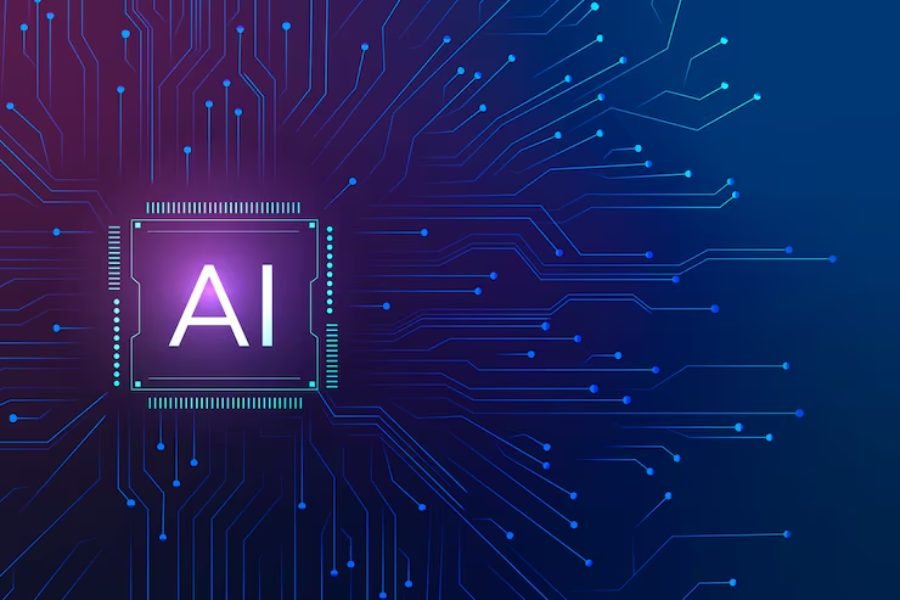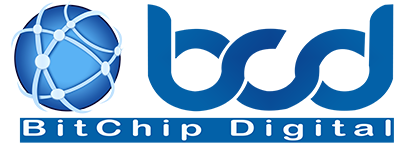
AI digital marketing has transformed how marketers purchase media space. No longer involving a sequence of boring, repetitive work and manual optimizations, today’s experts leverage platforms that harness digital intelligence to analyze behavior and automate ad placements. By integrating machine learning and real-time performance insights, platforms like Smart Supply revolutionize media buying, shifting it from dull guesswork to data-driven strategies.
So, what should marketers do amid this changing landscape to navigate walled gardens and complex supply chains? In this blog, we’ll discuss how AI-powered media buying and programmatic advertising platforms create a high-performing smart supply chain for ad inventory and how adopting them helps maximize ROI, reduce ad waste, and unlock hyper-targeted audiences.
From Manual to Machine: How AI Changed Media Buying
In the traditional marketing approach, media buying was a labor-intensive and time-consuming process. Most marketing teams depended on historical data and gut instinct to decide ad placements across print, radio, TV, and other channels.
Ad campaigns took months to launch, and there was almost no room for change after going live to incorporate real-time performance insights, leading to potential inefficiencies. Adjusting to audience behaviors or market trends was difficult due to the lack of automation, especially as digital platforms emerge and bring more complexity and fragmentation, hindering the ability to create a consistent, personalized experience for customers.
AI digital marketing, on the other hand, offers a smart supply system of advertising space by using machine learning to analyze behavior, performance, and market conditions. Digital intelligence can identify the patterns that humans might miss, predict optimal bids and placements, and automate campaign optimization instantly across various channels with unparalleled precision.
These tools not only boost the processing speed, but they also make the process smarter. In this sense, shifting from manual to machine in media buying isn’t simply a tech upgrade but a total transformation. Marketers no longer have to spend hours on mundane tasks — instead, they’re given more time to focus on strategies that align with business goals and customer needs.
What Is Smart Supply in Media Buying?
When it comes to media buying, a smart supply strategy often refers to the use of smart supply chain solutions that are driven by AI. This approach, unlike the traditional method, streamlines digital inventory procurement by leveraging real-time insights, predictive analytics, and campaign automation to help deliver the highest-performing placements. As a result, it minimizes platform biases and ensures each placement conforms with the overall campaign objectives, allowing advertisers to manage and optimize their media buys more effectively.
Let’s take an example to better identify a smart supply chain in AI digital advertising. An AI-powered programmatic advertising platform can curate deal IDs built for predetermined KPIs, provide access to premium DSPs and SSPs, and automatically remove fraud or low-quality inventory. Some solutions also adjust bids and targeting in-flight based on performance, securing optimal budget and campaign efficiency. Combined with human expertise, the smart supply approach to media buying promises to deliver data-driven, measurable results.
At this point, let’s briefly summarize our key insights so far. Adopting smart supply principles through AI platforms empowers marketers to obtain transparent control, efficiency, and scalability. Replacing the manual process, such a strategy makes every penny count on ad spend, contributing to maximum impact in today’s programmatic advertising landscape.
Key Ways AI Transforms the Media Buying Process
With AI, media buying has evolved from a slow, fragmented process into a dynamic system. Whether lightning-speed optimizations or precise targeting of segmented audiences, this part will explore the four key ways in which virtual intelligence reshapes how campaigns are planned and executed, allowing for streamlined operations and enhanced outcomes.
-
Automated and real-time bidding
AI eliminates manual adjustment efforts by analyzing big datasets in milliseconds — audience behavior, performance indicators, and market trends — to place bids simultaneously. This automation enables campaigns to respond immediately to opportunities, ensuring funds are allocated to the most valuable impressions without human errors or delays.
-
Enhanced targeting and segmentation
Digital intelligence goes beyond the surface level of demographics by uncovering hidden patterns in user behavior, such as browsing habits, purchase intent, and engagement history. As a result, it creates hyper-targeted audience segments, which helps brands send personalized messages to the most relevant audience, boosting conversion rates and minimizing ad waste.
-
Predictive analytics for better decisions
Unlike the manual method that only reacts to past events, AI forecasts future trends. The proactive feature enables marketers to distribute budgets smartly in response to seasonal demand or changing user interests, reducing risk and misalignment with business goals in media buying. This way, they can make decisions informed by data instead of intuition-based judgments.
-
Transparency and fraud prevention
Low-quality traffic or fraudulent impressions don’t stand a chance with AI monitoring tools. Machine learning can detect invalid clicks, flag anomalies, and cancel underperforming placements. AI-supported platforms also offer full visibility into impressions and traffic sources, allowing for cost control and a brand-safe environment within the smart supply chain.
To sum up, virtual intelligence has become the backbone of the modern media buying process. Through automation and precision, digital marketing teams can promote campaign workflows, spend more wisely, and achieve a competitive edge in the market.
Benefits of AI-Driven Smart Supply
Integrating intelligent algorithms, AI-driven smart supply is redefining the media buying process by delivering more than an automated system. Thanks to clear, trusted supply paths and real-time data analyses, it’s unlocking unprecedented advantages that revamp buying strategies for more agility and effectiveness. Here’s how it benefits your campaigns:
-
Improved ROI and campaign efficiency
AI determines highly effective inventory while avoiding wasteful spending to continuously optimize bids and placements. This way, brands enjoy higher conversions, lower acquisition costs, and optimal returns on every dollar spent on advertising efforts. Campaigns are more result-driven as advertisers gain insights into data to fine-tune their strategies accordingly.
-
Greater scalability and flexibility
Smart supply platforms adapt to changes more quickly, such as scaling to meet a surge in demand during peak seasons or pivoting mid-campaign. They ensure consistent performance, even in complex situations or market conditions, without manual reconfigurations. Think of launching a new product or expanding into new markets — no need to sacrifice precision.
-
Reduced manual workload and faster execution
Bid adjustments and performance reporting are made automated with AI. This advantage removes the burden on marketers, offering them more time to plan and strategize for accelerated campaign deployment. AI also prevents the chance of burnout, improving work-life balance for marketing teams.
On the whole, embracing smart supply chain solutions sets the foundation for more intelligent growth and sustained success, proving that this new route of AI digital advertising is a necessity, not an option. The earlier marketers employ AI-powered smart supply strategies, the faster they thrive on agility, speed, and cost control.
How to Adopt AI-Powered Smart Supply Solutions
The burning question you might have right now is where to start. The first move should begin with choosing the appropriate platform that aligns perfectly with your campaigns. The success later also depends on AI integrations with current workflows and measurement strategies for further optimization. Here’s the detail:
-
Choosing the right platforms and partners
Not all platforms offer the same things. Search for a strong digital media buying platform that possesses proven virtual intelligence capabilities, eliminates DSP biases, and provides direct access to premium inventory. Selecting an AI digital agency partner also gives you the benefit of tailoring unique KPIs for complex programmatic advertising campaigns.
-
Integrating AI tools with existing workflows
Ideal adoption should emphasize seamless data syncing, including creative assets and performance metrics, across all systems. This means AI needs to complement rather than disrupt existing processes. Plug in your new tools to the current CRM, analytics solutions, and ad servers to see if data flow is smooth. Many platforms offer APIs for automated optimizations.
-
Measuring success and optimizing campaigns
The power of smart supply lies in its ability to continuously learn and improve. Utilize AI dashboards to track the progress of your predefined KPIs and adjust targeting, creative, and bidding over time to ensure every impression contributes to ROI and business goals.
Taking these moves helps marketers discover the full potential of AI-powered digital media buying. The right partners, paired with uninterrupted execution and ongoing result measurement, will make AI smart supply chain solutions an indispensable part of future media buying practices.
What the Future Holds for AI-Powered Media Buying
The future of media buying is increasingly shaped by personalization, predictability, and transparency. As virtual intelligence grows and privacy regulations tighten, we’ll rely more on AI-powered platforms to navigate fragmented ecosystems and anticipate user behavior at scale. Smart supply also becomes more sophisticated to produce hyper-personalized ad experiences, dynamic optimizations, and outcome-driven measurements.
Amid this era, where agility and precision define advertising success, one thing is certain: marketers who proactively embrace AI-driven smart supply principles now will profit from future innovations. They will adapt to market conditions automatically without issue and connect with the audience more authentically. All things considered, the key to staying relevant with modern digital media buying is quick yet careful adoption of smart supply chain platforms.
Conclusion: Why Smart Supply Is the Future of Media Buying
Smart supply powered by AI has reinvented media buying from a manual, arduous process into a precise, data-based driver of growth. Capitalizing on virtual intelligence means gaining transparency and control over campaigns across channels through automated optimizations, enhanced audience targeting, and maximized ROI. As the digital advertising landscape grows increasingly complex, the future belongs to marketers who know how to adopt AI solutions quickly and reasonably.
